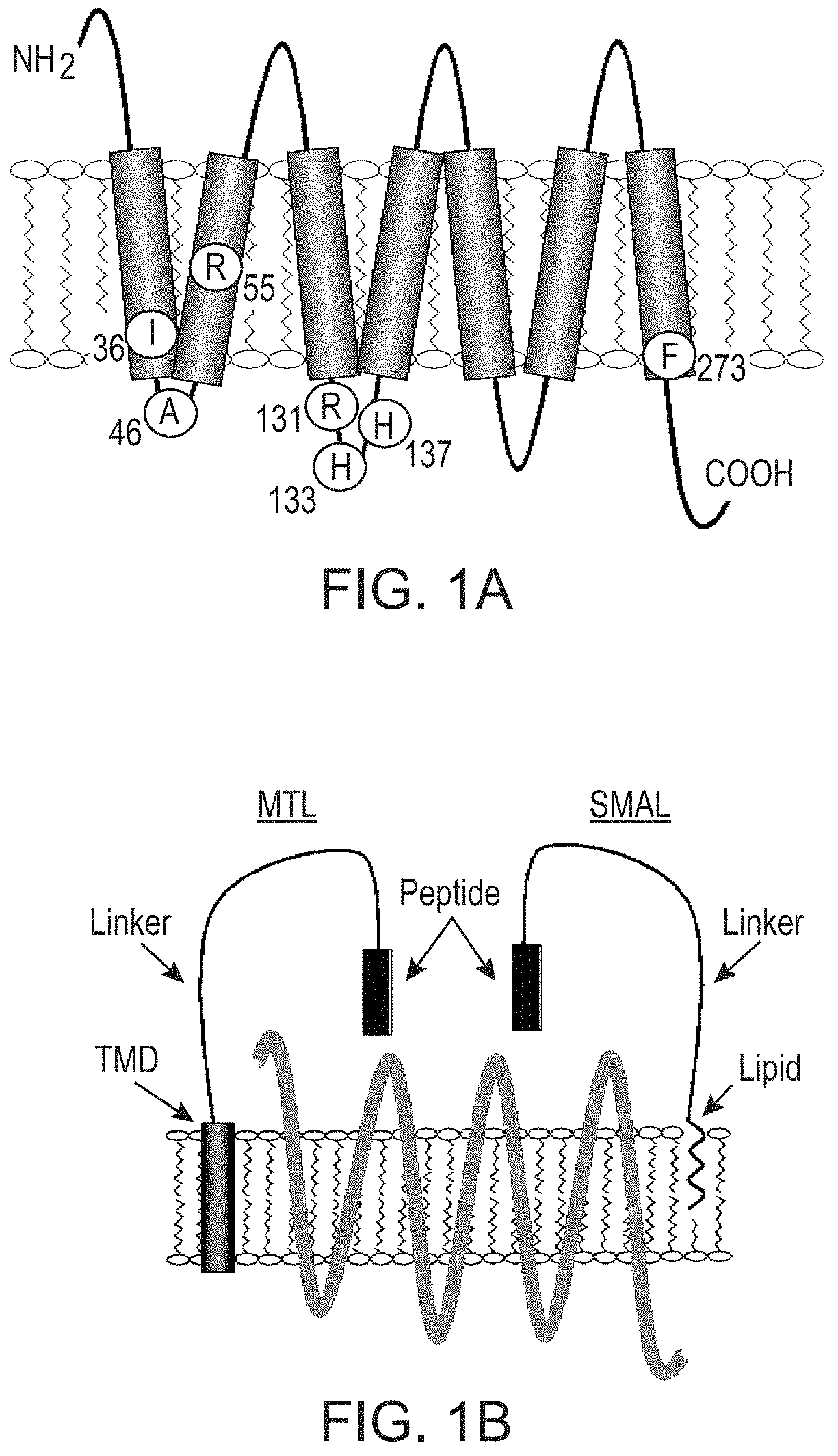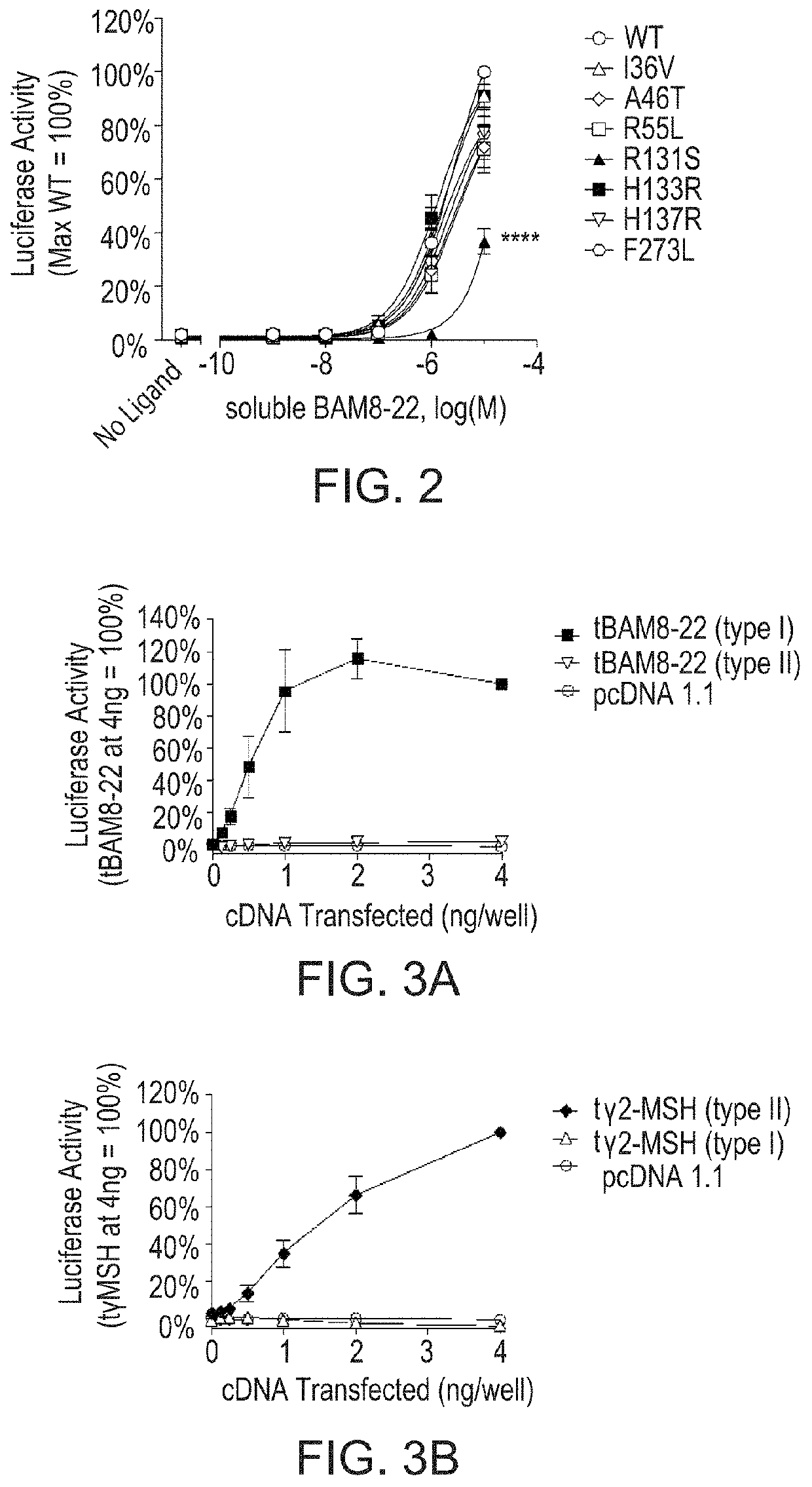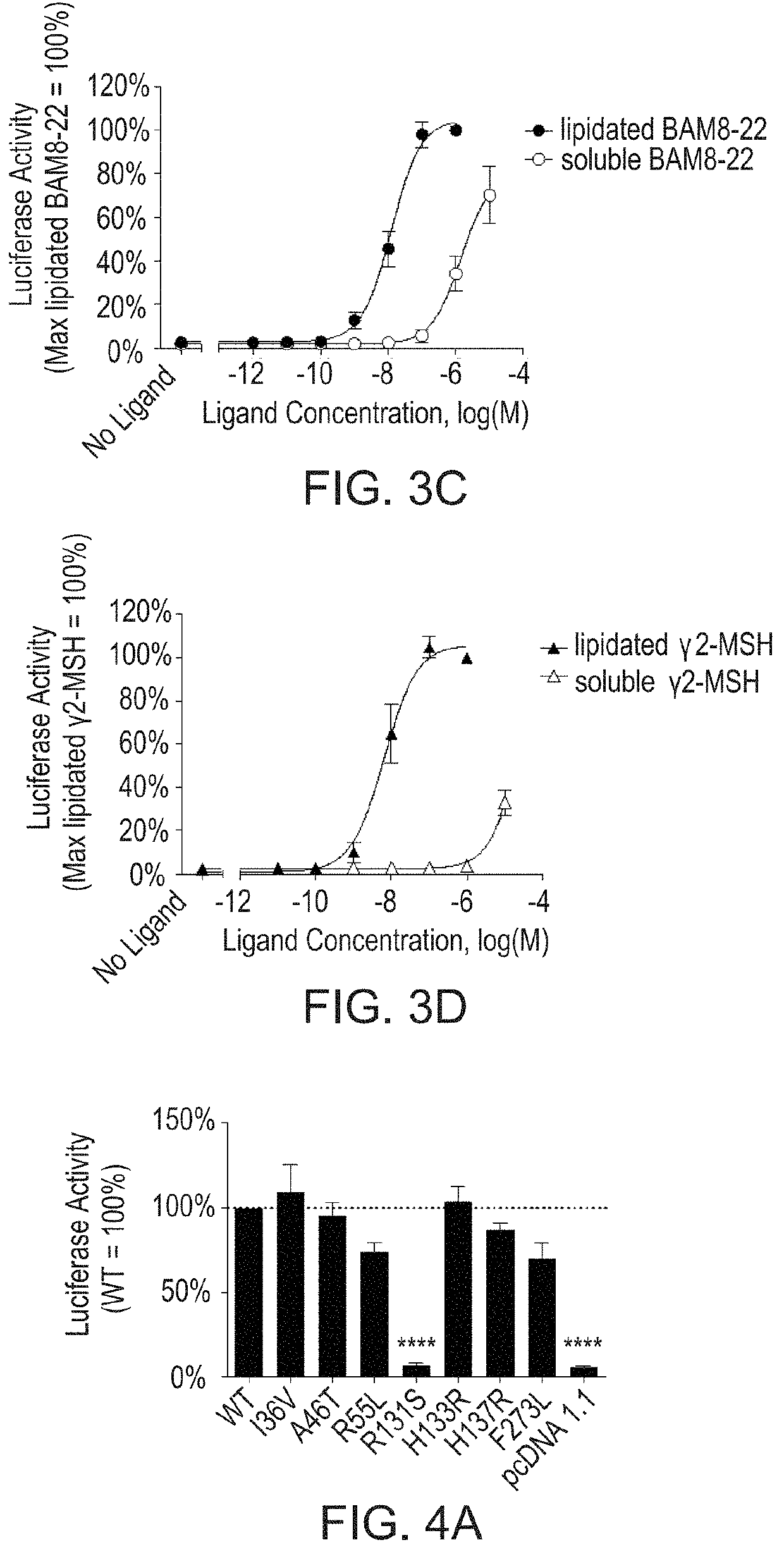Compounds and methods for treating pain
a technology of compound and pain, applied in the field of compound and pain treatment, can solve the problems of neuropathic pain, dysfunction, injury, etc., and achieve the effects of reducing pain, reducing pain, and improving pain
- Summary
- Abstract
- Description
- Claims
- Application Information
AI Technical Summary
Benefits of technology
Problems solved by technology
Method used
Image
Examples
example 1
Materials and Methods
Generation of Receptor cDNA Constructs
[0088]The MrgprX1 cDNA, in pcDNA 3.1, was generously provided by Dr. Xinzhong Dong (Johns Hopkins University School of Medicine, Baltimore, Md.). The construct was subcloned into pcDNA1.1 (Invitrogen). Naturally occurring missense mutations were chosen using data from the NHLBI GO ESP Exome Variant Server [Exome Variant Server, NHLBI Exome Sequencing Project (ESP), Seattle, Wash. (world wide web address at evs.gs.washington.edu / EVS / )]. Oligonucleotide-directed site-specific mutagenesis (Doyle et al., J Lipid Res 54:823-30, 2013; Fortin et al., Proc Natl Acad Sci USA 106:8049-54, 2009) was used to generate the receptor variants and corresponding epitope-tagged versions (where a hemagglutinin (HA) epitope tag was inserted immediately following the initiator methionine). Forward and reverse DNA sequencing confirmed the correct nucleotide sequences for each construct.
Generation of Recombinant Membrane Tethered Ligands (MTLs)
[008...
example 2
Missense Mutations in MrgprX1 Result in Differing Levels of Endogenous Peptide-Mediated Signaling.
[0096]Signaling of MrgprX1 following stimulation with the endogenous peptide ligand BAM8-22 was measured using a luciferase reporter assay as described herein. Cells expressing MrpgrX1 (WT or variant receptors) were stimulated for 4 hours with soluble BAM8-22. The R131S MrgprX1 variant shows reduced endogenous ligand mediated signaling (FIG. 2). HEK293 cells were transfected with cDNA encoding either wild type or variant MrgprX1, an SRE-luciferase reporter construct, and β-galactosidase. After 24 hours, cells were stimulated with soluble BAM8-22 for 4 hours. Luciferase activity was quantified and normalized relative to β-galactosidase expression. Three independent experiments were performed in triplicate, and data were expressed relative to the wild type receptor signal (maximum stimulation=100%). Results are shown as the mean±SEM. ****, p−5 M). Concentration-response curves presented i...
example 3
Characterization of Novel Recombinant and Synthetic MrgprX1 Ligands.
[0097]As additional tools for structure-function studies, MTLs incorporating one of two endogenous peptide ligands for MrgprX1, BAM8-22 and γ2-MSH, were generated. The activities of MTL constructs in both orientations (type I, with an extracellular N terminus of the ligand; type II, with an extracellular C terminus) were assessed using a luciferase-based reporter assay as described herein. FIGS. 3A-3D show that Type I tethered BAM8-22 (FIG. 3A) and type II tethered γ2-MSH (FIG. 3B) are active on the WT receptor. Lipidated BAM8-22 and lipidated γ2-MSH exhibit increased potency compared to the corresponding soluble peptides (FIG. 3C and FIG. 3D, respectively). To determine MTL activity, HEK293 cells were transfected with increasing amounts of cDNA encoding either tethered BAM8-22 or tethered γ2-MSH, as well as a fixed amount of cDNA encoding wild type MrgprX1, an SRE-luciferase reporter construct, and β-galactosidase....
PUM
| Property | Measurement | Unit |
|---|---|---|
| flow rate | aaaaa | aaaaa |
| structure | aaaaa | aaaaa |
| size | aaaaa | aaaaa |
Abstract
Description
Claims
Application Information
 Login to View More
Login to View More - R&D
- Intellectual Property
- Life Sciences
- Materials
- Tech Scout
- Unparalleled Data Quality
- Higher Quality Content
- 60% Fewer Hallucinations
Browse by: Latest US Patents, China's latest patents, Technical Efficacy Thesaurus, Application Domain, Technology Topic, Popular Technical Reports.
© 2025 PatSnap. All rights reserved.Legal|Privacy policy|Modern Slavery Act Transparency Statement|Sitemap|About US| Contact US: help@patsnap.com



